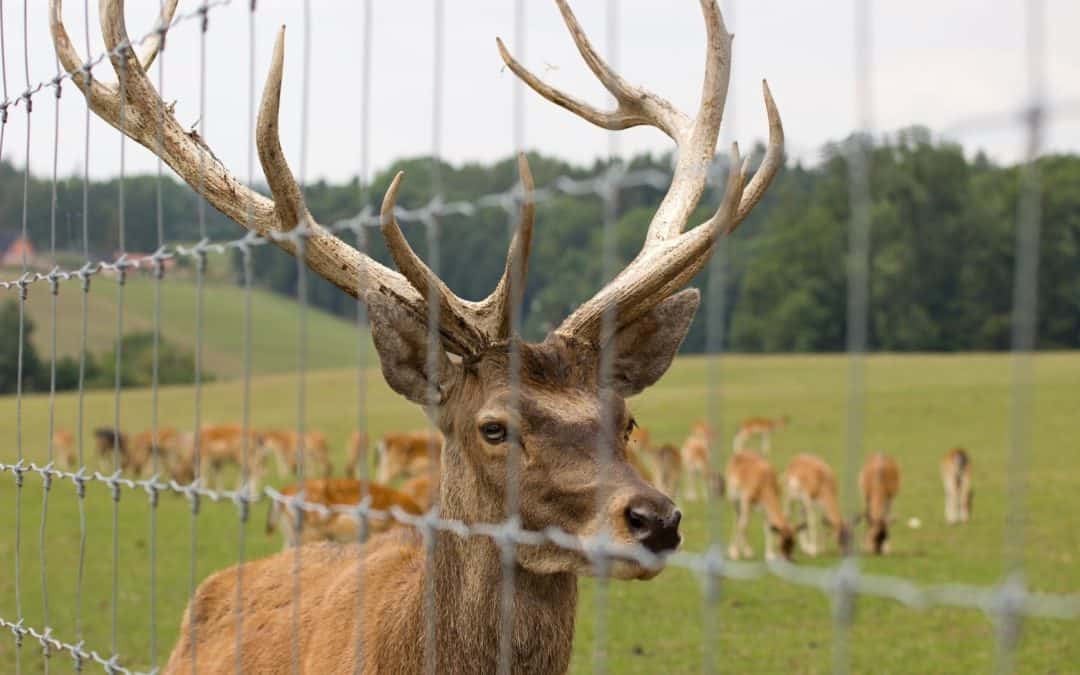If you’ve experienced having your garden plants being eaten by deer or other pests, then you may want to consider adding fencing to your property’s perimeter. Other than fencing, there are other solutions out there such as deer-resistant shrubs and other repellents. However, fences still provides the most effective solution to keeping deer away from your beloved plants.

Types of Deer Fencing Materials
Fencing can vary in terms of visibility, cost, durability, and effectiveness. When planning to add fencing, consider your budget. Choose what you can afford and weigh the pros and cons of the product. To help you, here are the most common fencing options to choose from.
- Polypropylene Deer Fencing
Plastic or polypropylene mesh deer fencing is currently a well-loved option by many. If plastic doesn’t appeal to you, there’s no need to worry as there are many deer fencing options available. The mesh is attached to vertical posts to create a barrier. If you opt for this kind of fencing, you’d want to choose a grade with a breaking load of 800+ pounds. The higher the breaking load value of a polyproline deer fencing, the stronger it is.
Pros
- Affordable than other options
- Mesh is almost invisible
- High-quality ones can effectively withstand deer force
Con
- Doesn’t last long
- Metal Deer Fencing
The most common fencing option is wire mesh created from heavy-gauge metal. This type of fencing does come with its pros and cons, too.
Pros
- Can effectively withstand deer pressure
- Lasts longer than plastic ones
- Plastic-coated fencing is invisible
Cons
- More expensive than plastic
- It may not blend well with the landscape
Other Fencing Options
Other traditional fencing options can also protect your property from deer. However, if you’re fencing your property just to keep deer out, some fencing options may be too expensive.
- Chain-Link Fence
A chain-link fence that’s 8-feet tall can also serve as a deer fencing option and make the most out of your garden. It’s loved by many people because it’s usually the most cost-effective solution, especially for large properties. While old chain-link fences aren’t that pleasing to the eyes, modern ones have been improved both aesthetically and in terms of durability. Here are its pros and cons:
Pros
- Quick to install
- Affordable
- Low-maintenance
Cons
- Lack of privacy
- Looks plain
- Solid Wooden Fencing
Another fencing material to consider is wood. If you choose to have a solid wooden fence, it’ll help deter deer as the inability to see the other side discourages them from jumping over. Thus, this option is also effective. Aside from providing deer protection, you also can customize your fence design to blend with your home style.
Check out the benefits and disadvantages of wood fencing:
Pros:
- Affordable
- Easy to install and repair
- Varied style options
Cons
- Not as durable as other materials
- Yearly maintenance is required
- Electric Deer Fencing
Electric deer fencing is made of wires strung low around your borders, which gives deer a mild shock. However, this isn’t considered a barrier. This option is designed to influence deer behavior by exposing deer to the shock and discourages them from getting near the area in the future.
Considerations in Choosing Fencing Material
Before deciding on the material, it’s best to determine what to look for when choosing. Here are some things to consider:
- Fence Height – Deer can jump over fences as high as six feet. Thus, you’d want to choose a fence that can stand to about eight feet. There are many fencing options that can’t effectively keep deer from getting into your premises.
- Provide Slack – Deer don’t just jump over fences; they’ll also push under fencing. Thus, you’d like to ensure that there’s no gap between the ground and the fencing. For plastic fencing, you can let the material spill out in front of the fencing. You can then pin the material to the ground using stakes.
- Maintenance – If the material incurs damage, it needs immediate repair because a damaged fence doesn’t provide full protection. Deer can find quickly find this damage and get in through it.
- Durability – To improve the durability of the fencing material, choose something with added protection. For plastic fencing choose something with UV-protection. If you choose metal, choose galvanized.
- Add a Gate – You need access to your garden or any part of your property. However, you have to deer-proof your gate, too.
- Keep Other Pests Away – In case you live somewhere where deer aren’t the only intruders, then you may consider them in the fencing material you choose. There are also fencing options that have tiny openings, which you can consider.
Final Thoughts
If you want to provide a long-term solution to deer invading your garden, deer fencing is recommended. Knowing the pros and cons of different fencing materials, such as vinyl, will help you decide on what material to choose for your property.

Recent Comments